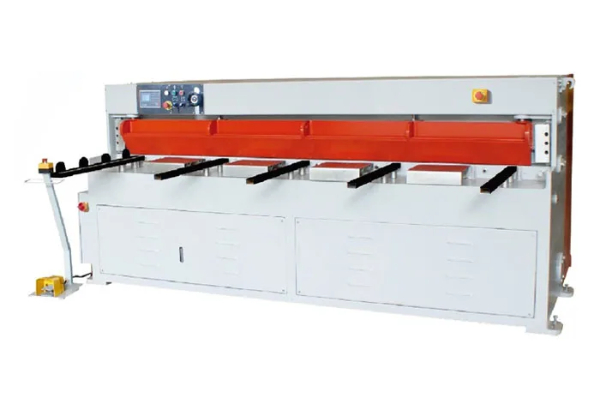
Understanding the Operation of Sheet Metal Rolling Machines
- By:Metmac
- 2024-09-02
- 169
In the realm of metal fabrication, where precision and efficiency reign supreme, the sheet metal rolling machine stands as a stalwart sentinel. These colossal machines possess the formidable power to transform raw, flat sheets of metal into intricate and useful forms.
At its heart lies a pair of contra-rotating rollers, their massive power transmitting immense force onto the metal. As a sheet of metal is fed into the rollers, it is subjected to a relentless dance, alternately squeezed and pulled, bending and conforming to the desired shape.
The operator of a sheet metal rolling machine wields a delicate symphony of controls. With deft precision, they guide the metal through the rollers, adjusting the gap between them to achieve the perfect curvature. The speed of the rollers is meticulously regulated, ensuring a smooth and even bend.
The result is a masterpiece of metalwork, a seemingly seamless curve that would be impossible to achieve by hand. From cylindrical tanks to architectural cladding, these rolling machines empower fabricators to bring their visions to life.
Types of Sheet Metal Rolling Machines
There exists a myriad of sheet metal rolling machines, each tailored to specific applications.
Three-roll: The most common type, offering both vertical and horizontal bending capabilities.
Four-roll: Provides more precise control over the bending radius, ideal for complex geometries.
Pyramid: Combines the functionality of three- and four-roll machines, allowing for advanced shaping.
Applications of Sheet Metal Rolling Machines
The versatility of sheet metal rolling machines makes them indispensable in industries such as:
HVAC: Ductwork, air conditioners, and ventilation systems
Automotive: Body panels, bumpers, and exhaust systems
Construction: Roofing, siding, and architectural elements
Aerospace: Wing components, fuselage panels, and fuel tanks
Conclusion
Sheet metal rolling machines are the master sculptors of the metalworking world. Through their precise and powerful operations, they transform flat metal into the sinews of our modern world. From the intricate curves of aircraft to the protective barriers of buildings, these machines continue to shape our built environment, one bend at a time.
-
Advanced Sheet Metal Rolling, Cutting, and Folding Machines for Efficient Fabrication
2025/10/22 -
High-Precision Sheet Metal Bending and Cutting Solutions for Modern Manufacturing
2025/10/22 -
High-Precision Solutions from Leading Sheet Metal Cutting Machine Manufacturers
2025/09/11 -
Reliable Sheet Metal Equipment for Sale to Support Precision Fabrication
2025/07/17
-
Advanced Sheet Metal Rolling, Laser Cutting, and Folding Machines for Precision Fabrication
2025/10/31 -
High-Performance Sheet Metal Bending and Cutting Machines for Modern Fabrication
2025/10/31 -
High-Quality Sheet Metal Equipment for Sale: Efficient Solutions for Modern Manufacturing
2025/10/31 -
High-Performance Sheet Metal Equipment for Sale: Forming and Shearing Solutions for Modern Fabrication
2025/10/22
-
A Guide to the Latest Innovations in Sheet Metal Folding Machines
2024/11/29 -
Key Features to Consider When Investing in a Sheet Metal Folding Machine
2024/11/28 -
Enhancing Precision with Advanced Sheet Metal Folding Machines
2024/11/27 -
How to Choose the Right Sheet Metal Folding Machine for Your Workshop
2024/11/26






